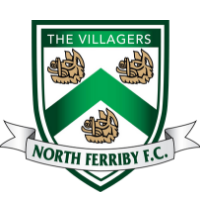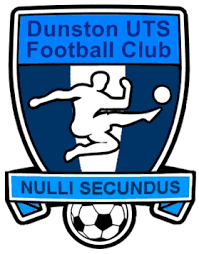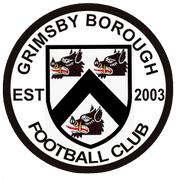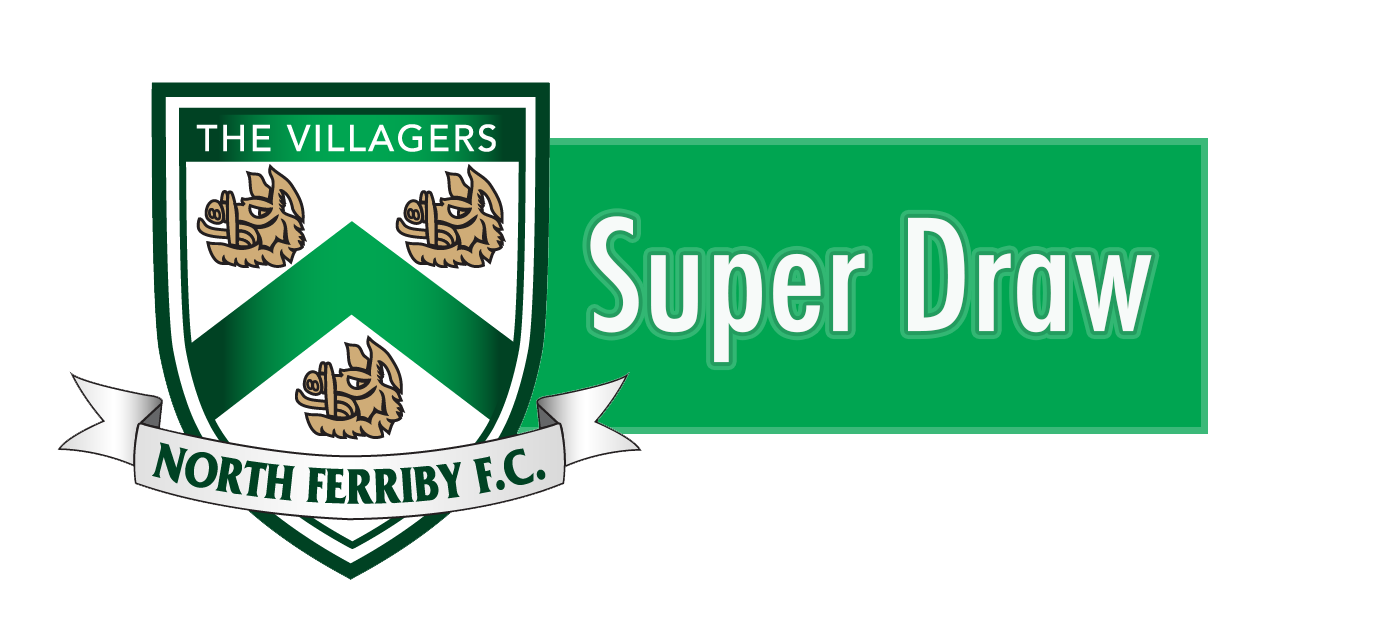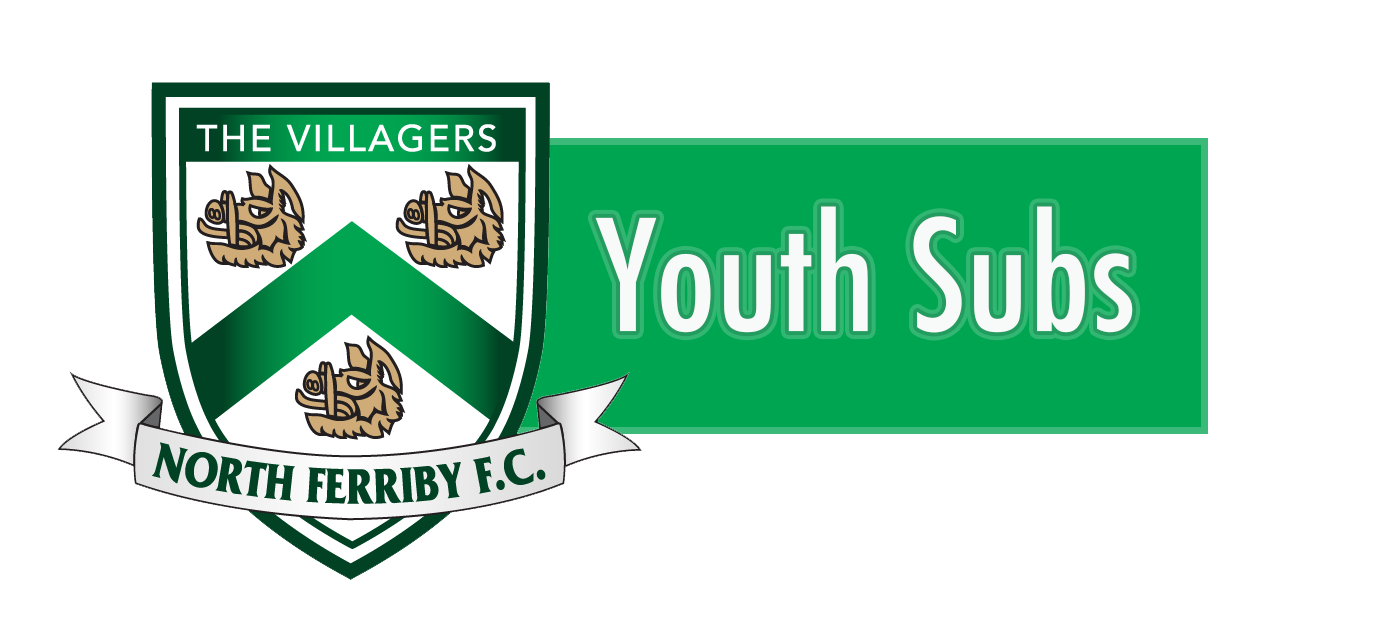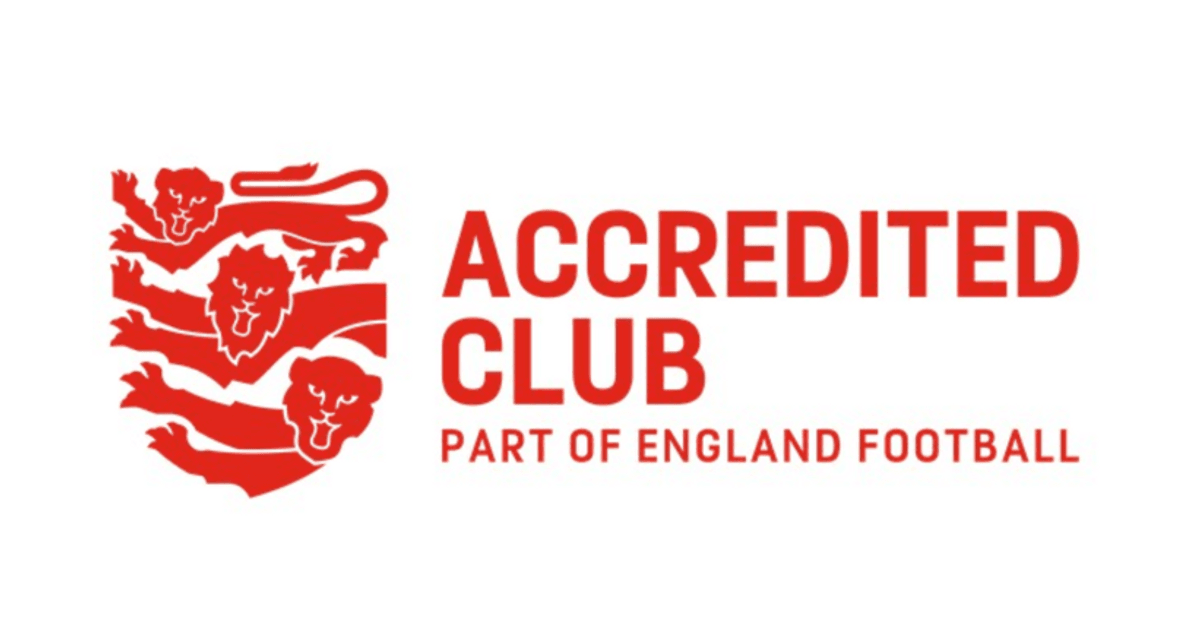History
The History of North Ferriby – a Village Football Club extraordinaire
Although there’s evidence that football had been played within the village since the 1890’s, it’s not until after the great war we can establish for certain that North Ferriby Football Club had been officially formed. Sadly, there’s no record of how the club started, but one could imagine an informal meeting of like-minded gents in a smoke-filled corner of the local pub. The first published record is of participation in the East Riding Intermediate Cup on 6 November 1919. A further Hull Daily Mail report in January 1920 revealed North Ferriby had played consecutive fixtures on Christmas Day (won 8-2), Boxing Day (won 3-2) and 27 December (won 2-0). An auspicious start for the club and perhaps a precedent for future success, although one doubts that teams nowadays would, or even could, play three games in three days!

Off the pitch, the driving force behind the club in its early days was Mr J V Knowles. He was the chief cashier at Barclays Bank in Hull and very active in the village community. He’d been chairman of the North Ferriby Parish Council, vice chairman of the Playing Fields Association, chairman of the village cricket club and a keen church goer. As a notable local resident with influence, he would have been in an excellent position to establish and steer the fledgling football club forward.
One of the earliest successes was in reaching the final of the South Howdenshire Cup in 1921 against Howden. A team photo hangs proudly in the clubhouse. The game was played at Howden in front of a crowd of 1500, an “unprecedented assemblage including a large number of Ferriby supporters” according to the HDM, who further reported that each set of fans were “gaily bedecked with their club’s colors”. Unfortunately, Harry Thomas, the Ferriby captain, had to be satisfied with a runners-up medal as the team eventually went down 2-1 having finished the game with just 10 men following the loss of scorer Arthur Kirby through injury at half time. No substitutes in those days.
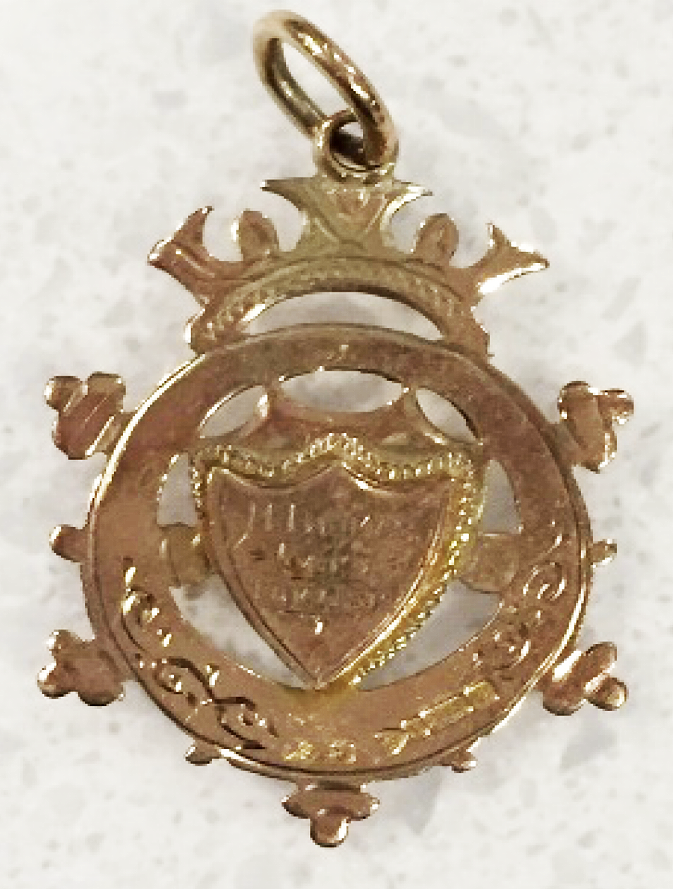
Further HDM reports inform us of a 1-1 draw with Elloughton on 3 March 1920, a 1-0 win against Newport on 21.10.22 and a 5-2 win at Hessle Church on Saturday 23.12.22. Clearly successful times for the club who by 26.2.24 were reported to be in Division 1 of the South Howdenshire League.
On 28 April 1923 North Ferriby hosted the final of the South Howdenshire Cup between Melton and Willerby. One can start to imagine the immense pride of the club’s committee and volunteers as they busily prepared their pitch on Pickerings Field in the village. At the AGM on 30.5.23, it was reported the club had declared a debt of between £2 and £3, but Mr. H Kirby (honorable treasurer) reassured members the loss would be more than covered with payment of outstanding subscriptions. At that same meeting, Ferriby were shown to be 7th in the South Howdenshire League, the league table conforming 17 points had been gained from 19 games. Seven games had been won, three drawn and nine lost.
It’s good to know that even in these early years the welfare of Ferriby players was central to the club ethic. The HDM reported on 23.11.29 “North Ferriby arranged a dance for the benefit of Jack Hilton who had met with an accident on the football field recently”.
No one’s certain what happened to North Ferriby FC during the early 1930’s, although on 26.3.32 it was reported in the HDM Ferriby had triumphed by 8-0 against Southcoates, but by 1934 the club had reformed as North Ferriby United and what ultimately would prove to be, a ‘village club extraordinaire’. In their very first season, NFU were runners up in the East Riding Church League Division One, but also went on to win the League Cup in that inaugural season. Further successes followed in quick succession with the lifting of the South Howdenshire Cup and the League Cup again in 1937. In 1938 the South Howdenshire Cup was retained for a second year but more auspiciously, the club were crowned East Riding Church League Division 1 Champions.
Between 1934 and 1954 the football club played on several sites within the village. Humber Road, Corby Park and initially on Ings Lane ‘Pickerings Field’. All are officially listed locations. Significantly, in 1954 Sir Arthur Atkinson stated in a HDM report of the opening ceremony that it was very rare for a Village to have “such splendid facilities”. The club’s committee and volunteers had acquired unwanted bricks from a disused building and constructed in their own time and at their own expense a brick pavilion at their new home on the Grange Lane Playing Fields. So good was the quality of construction, the building is still in situ and used by the cricket club.
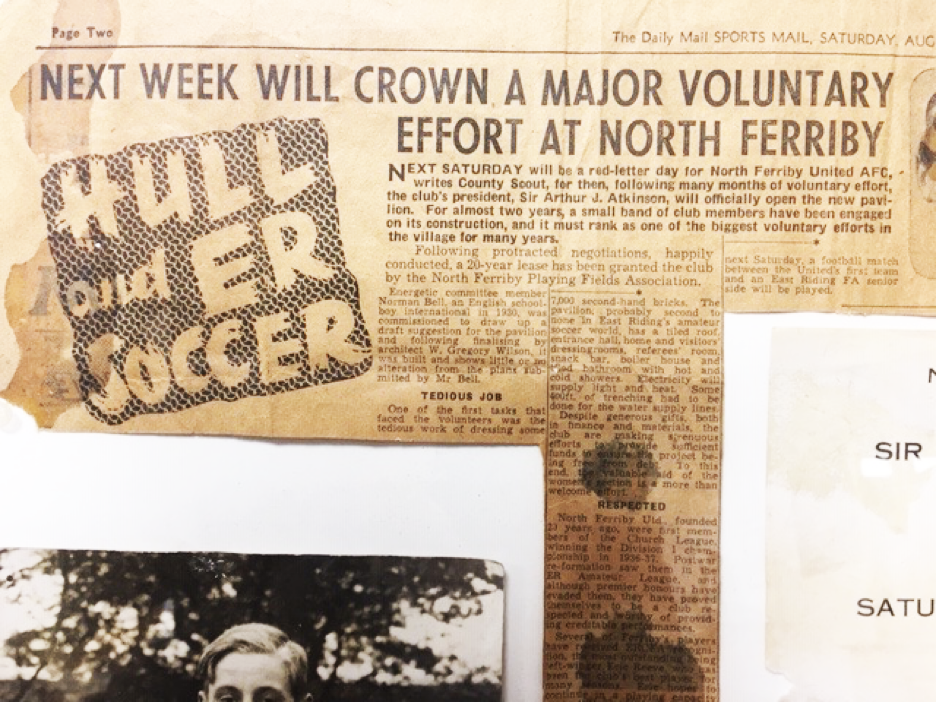
During the post-war period of 1947 to 1954, the club’s ongoing success continued unabated. The 46-47 season ended with victory in the South Howdenshire Cup, as well as finishing Runners-up in the East Riding Amateur League Cup, beaten 5-1 by Brunswick Institute at Hull City’s former home ground of Hull Amateurs. Brunswick were unbeaten in all competitions that season. 47-48 saw the club retain the South Howdenshire Cup and set what has remained to be the clubs record score with a 22-0 victory over Brighams. A terrific run in the National FA Amateur Cup ended with defeat to David Brown’s Athletic, an engineering works team in Huddersfield. In the 49-50 season the South Howdenshire Cup was lifted yet again, whilst also finishing runners-up in the East Riding Amatuer league Senior Cup. A second X1 had been formed this season and they did very well finishing Runners-up in the East Riding County League Division 1. Incredibly, however, this season saw North Ferriby become the first East Riding club to ever progress to the 1st round proper of the National FA Amateur Cup, unfortunately losing out away to Bradford Rovers in the October of 1949. The South Howdenshire Cup was won yet again in 50-51 and for a third consecutive season in 1951-52.
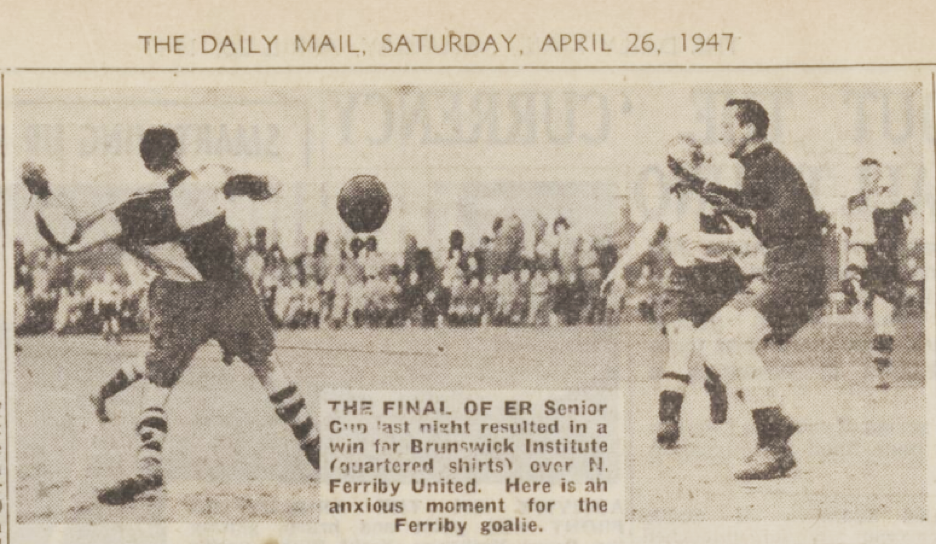
By North Ferriby standards, there followed a pretty lean period that extended until the start of the 60’s. The East Riding Amateur League Cup was eventually won in 1959-60 season, adding to the Runners-up medals picked up in the South Howdenshire Cup. 60-61 saw The Villagers lift the South Howdenshire Cup, whilst in 61-62 triumph came by winning the East Riding Amateur League Division 1 title. 62-63 produced yet another victory in the South Howdenshire Cup and yet another League victory, this time the East Riding Amateur League Division 2 title, followed in 63-64.
But the urge to progress was like a baton being passed on and on and by 1969 the need to move again had been determined after club officials decided the best way forward lay within the wider, bigger world of the then Yorkshire League. To meet requirements, though, a new pitch was needed and so eyes turned to a veritable wilderness that lay between the playing field and the railway. An area of land originally designated for allotments after the Second World War but had subsequently laid unused. The local Parish Council were approached, and the outcome was the granting of a lease, the proceeds of which would support the Parish’s obligations for maintenance of the playing fields. A win-win all round and an enduring arrangement still in existence today, albeit at a significantly higher contributory level from the football club!
So, the hard work began, and the jungle was levelled and seeded in readiness for the 70/71 season. Posts and rails were needed to replace the previously used ropes to cordon off the pitch from spectators and so a deal was struck with the now defunct Hull Brunswick club. An offer of £40 was accepted and having borrowed a lorry, committee men and players from The Villagers drove into Hull, dug up every single post and rail and brought them back to the new ground. These were subsequently installed to ensure compliance with Yorkshire League ground grading requirements and in doing so, the foundations of the now Dransfield Stadium had begun.
In between time, the access track (now Grange Lane) was improved and a car park dug out and surfaced. Up until this time, there was no parking facility for the playing fields and so 150 tons of topsoil had to be removed to make way for a hardcore base. This back breaking work was completed by committee men and players, duly assisted by a player’s parent who conveniently owned a haulage firm and who’s contribution ultimately saved both club and Parish Council a small fortune.
A small stand was then constructed on the south side of the ground (railway side), although spectators at that time still had to walk on grass around the pitch to reach it. Also having to walk some distance was players. Although the new ground had now been established, they were still having to walk some 200 yards from the changing rooms on the playing field.
By the 1972/73 season, it had become apparent the clearing of the area to create a football pitch had caused a drainage problem and so drains had to be laid on the south side in order to relieve surface water. Despite these teething problems, the club started the 70’s very much as they had the 60’s. 1969-70 ended with an appearance in the final of the East Riding Senior Cup at the club’s first attempt in the competition. The second X1 had more success, however, lifting the South Howdenshire Junior Cup. Not to be outdone, the first team lifted the East Riding Senior Cup at the end of the 1970-71 campaign and were also crowned Yorkshire League Division 2 Champions. 1971-72 saw more success for the second X1 who won the East Riding County Cup.
The climax of the 1974-75 season saw The Villages lift the Yorkshire League Cup with a 2-0 victory over Lincoln United and in 1975-76 they ran out Yorkshire League Division 1 runners-up to Emley. Silverware just kept on coming as the East Riding Senior Cup was won three years in a row 1977, 78 and 79.
It was the ambition of the club’s committee to have their own clubhouse and in 1977 they were successful in a bid of £50 to Beverley Borough Council for two condemned pre-fabs. Like so many football clubs, North Ferriby had insufficient cash and couldn’t do anything with their acquisition at that time, so the buildings were dismantled and stored in a car park at the Ferry Inn at Brough. Fortuitously, the club raised £100 from scrap metal removed from these buildings, in effect making a profit from their purchase. Attention then turned to a concrete base for the pre-fabs, so every weekend for almost three years the committee would take their brushes to the nearby Earls Cement works who allowed them to sweep cement dust off the floors at the end of shifts. By 1980, they had collected enough cement to prepare the foundations of the new clubhouse and by the summer of 1981 the pre fabs had been erected. The two end walls were removed, thus making it a single building. A building still in use some 40 years later.
A deal was struck with Tetley to help finance the bar and cellar installation and by the start of 1981/82 it was ready to open. Behind the scenes, there had been unbelievable opposition to the club obtaining a license to sell alcohol and it’s said a book could have been written about the efforts the committee had to make, but eventually succeed they did. Unfortunately, however, the club yet again had insufficient funds to connect drains to the main sewer that lay 400 meters away under Church Road, so a cess pit was dug inside the ground under what is now the entrance car park. When the day came for the big opening a large crowd gathered to witness the arrival of the first Tetley delivery. The dray wagon swept majestically into the ground and immediately collapsed into the cess pit where it remained for several days until a JCB eventually pulled it out. It’s been said many times, there’s an easy way, a hard way and then the Ferriby way!
Ahead of the 1982-83 season, the Yorkshire League had merged with the Midland League to become the now Northern Counties East League. In preparation for that inaugural season, the football club finally vacated the pavilion it had built some 30 years earlier and moved into the new changing rooms they’d constructed next to the clubhouse. This was a mandatory requirement to meet ground grading as it was no longer acceptable for players to trapse 200+ yards to the pitch. The pavilion was passed over to the Playing Fields Association free of charge, yet the club continued to cover ongoing water and electricity costs for many years to follow as there wasn’t a separate supply.
The club enjoyed a successful inaugural season in the NCEL 1982-83, finishing Division 1 runners and similarly runners up in the East Riding Senior Cup. The Villagers were bridesmaids yet again in 1984-85, being runners up in the East Riding Senior Cup, but in 85-86 a fantastic campaign ended with North Ferriby crowned NCEL Division 1 Champions. A magnificent run in the FA Vase during the 1988-89 season ended with semi-final heartache. After securing a credible 1-1 draw away to Tamworth in the first leg, the Villagers cruelly missed out on a Wembley outing, losing the second leg 1-3.
A succession of ground improvements had been undertaken in the six-year period during 1983 and 89. Two old turnstiles had been acquired from Hull City and installed next to the main gate. The chalk covered inner car park was resurfaced in tarmac, a six foot corrugated steel fence was erected to all boundaries and a hard standing walkway laid for supporters to get around the pitch. A covered stand was extended from the front of the changing rooms providing the luxury of 40 seats and sheltered standing for 100 spectators to huddle under. A portacabin was brought in and situated at the far end of the clubhouse, thus providing a first boardroom facility, ideal for committee meetings and matchday hospitality. A second portable building was then added next to it, to act as the club office.
Whilst as commented earlier a book could have been written about the difficulties the club had endured securing a alcohol license, it was yet another herculean effort by the committee to not only raise all the funds needed, but eventually gain planning permission too for the erection of floodlighting. After two grueling years, however, all the hard work was rewarded as lights were eventually installed and turned on in October 1989.
The nineties started with yet more silverware. 1990-91 the East Riding Senior Cup was won, the NCEL Presidents Cup followed courtesy of 8-5 aggregate victory over two legs against Guiseley, but the Villagers had to settle for runners up in the NCEL League Cup, going down 0-1 to Guiseley. The reserve team this season finished runners up in the NCEL Reserve Division. In 1992-92 Ferriby ended the season East Riding Senior Cup finalists and in 1994-95 runners-up in the NCEL League Cup.
Progression off the pitch was to continue too. In 1993 the original covered stand was condemned and demolished, to be replaced with a new 200-seat covered stand, built with the aid of a Football Trust grant. The 200 seats were donated by Sunderland who were themselves undertaking regulatory work at Roker Park in compliance with the Taylor Report. A horse box was borrowed for the collection of the seats and the committee not only dealt with the shipping back to Ferriby, but also installed them. In the following year, 1994, a pre-cast concrete garage was acquired and installed at the southeast corner, thus providing proper storage for the tractor, mowers, line marker and the like.
During the summer of 1994 one of the most important decisions was taken to ensure the football club became both inclusive within its community and provide itself with a lifeblood for its own future. A youth structure was to be introduced. Starting with just one age group, the plan was to open up footballing opportunities for all age groups, presenting an unprecedented seamless progression from mini soccer to semi-professional adult football within the same club. By 1996, this had become a reality and in 1999 the Villagers would become the first local club to achieve FA Charter Community Club status.
1995 was a busy year developing the changing room block. With the help of a ‘Sports Match’ grant both home and visitors changing rooms were extended, producing 50% more space. More importantly in the eyes of many supporters, and certainly our long-suffering ladies, was the building of a bespoke extension to re-house the club’s famous ‘chuckwagon’. Fully fitted with ‘mod-cons’ it was a catering facility to envy and the steak pies began to roll out like a production line. But a busy 95 was followed by an even busier 96. Two new stands, one either side of the seated stand were built producing covered standing to accommodate 900. A new entrance to the clubhouse was formed and brand-new public toilets were built on the inner car parking area. The front of the changing room block was transformed with the addition of ensuite treatment rooms for both home and visitor changing rooms and the creation of a press office.
No one could have envisaged the start of the 1996-97 season would be the beginning of a footballing revolution for North Ferriby. Eighteen of the following nineteen years would bring success on the pitch.
1996-97 will last long in the memory of North Ferriby fans the world over. The East Riding Senior Cup was lifted, and the club’s youth team won the Dr Lilly Cup at Boothferry Park. But it was the FA Vase that took center stage. Having entered the competition at the preliminary stages, The Villages achieved the dream of every football team by making it to the Final, those famous white towers of Wembley Stadium. Despite being beaten by a much stronger Whitby Town, nothing could ever take away the occasion.
During the summer of 1997 one of the boldest projects ever undertaken by the club was completed. Having been denied permission to link it’s drains to the main sewer at the junction of Grange Lane with Church Road, the closest route, the decision was taken to reroute trenching first across the pitch and then following the railway embankment all the way down to Church Road, eventually connecting to the main sewer under the overhead railway bridge. All this just so the old cess pit could be bypassed and finally filled in. No more smelly pumping out!
Before the 1997-98 campaign got underway, the old dug outs were demolished and new ones built. New posts and rails replaced the pitch perimeter, and the inner car park was tarmacked. On the pitch, a long season climaxed with the lifting of the East Riding Senior Cup and the young U18 squad again winning the Dr Lilley Cup, but not before The Villagers had to agonizingly settle for runners up spot in the NCEL Premier Division and similarly finishing runners up in the NCEL League Cup.
1998-99 produced the club further silverware via four trophies. The first team picked up to cups, winning the NCEL Presidents Cup and East Riding Senior Cup. The young U18’s picked up the Dr Lilley Cup for a third consecutive season and the Reserve Team won the NCEL Reserve Division.
In the summer of 1999, a project that had started some four years earlier through a protracted acquisition of neighboring land purchased from Trinity House culminated in spectacular fashion. A brand-new quarter sized synthetic grass pitch was opened with an auspicious fly past by the world famous Red Arrows. Complete with trailing smoke, at just 300 feet they majestically passed over with headlights blazing in a rare 10 plane formation. The whole project was made possible by an unlikely financial windfall in 1995. Some years earlier, Dean Windass had been sold to Hull City, however, as they were strapped for cash, they agreed to a 20% sell on clause, a clause no one ever expected to materialize. But by December of 1995, Hull City were in dire financial trouble and faced a winding up order unless debts to HM Customs were paid in full. After several failed deals, Hull City eventually had a firm ‘cash’ offer on the table from Aberdeen to buy Dean, but to get the deal over the line North Ferriby agreed to a 50% cut in their sell-on clause and were instantly £60,000 better off. Similarly, Hull City were then able to clear their debt and so both clubs enjoyed a win-win outcome. Accordingly, the new facility was named The Dean Windass Centre and every youngster within the club could now enjoy structured training and coaching in complete safety.
After such a thrilling summer, buoyed by the completion of this wonderful new facility, perhaps it’s no surprise that The Villages went on to secure a memorable treble in 1999-00, the Millennium season. Silverware was duly delivered be winning the East Riding Senior Cup and NCEL Presidents Cup, but the icing on the cake was becoming Champions of the NCEL Premier Division and thus gaining promotion to the Unibond League (Northern Premier League).
A step up in League standard necessitated a review of the playing surface and so before the commencement of the 2000-01 inaugural season in Unibond League Division 1 a comprehensive pitch drainage system was laid. Deep drains across the pitch were connected to a main which in turn was trenched to connect to the ditch at the Southeast corner of the ground. The whole pitch was then crossed with sand slitting, designed to channel water quickly from the surface to the drains below. A major and innovative project for a tiny ‘village’ club. The new surface didn’t help with a promotion push in the first season of life in the ‘big’ league, but silverware was duly delivered yet again by winning the East Riding Senior Cup.
2001-02 saw the East Riding Senior Cup lifted for a record equaling sixth successive season. Only Hull City had achieved this landmark previously. In keeping with the club’s burning desire to continually seek to improve its stadia facilities, 2002 saw the demolition of the old boardroom and removal of the aging portacabin, used as an office for so long. In their place was built a palatial new brick complex housing a boardroom, kit room, office and youth changing rooms. The building was connected to the clubhouse, thus providing internal access to the boardroom.
A new competition record was set in 2002-03 as the East Riding Senior Cup was won for a seventh year in a row. An incredibly good season also culminated with a Play-off finish, but an away tie at Radcliffe in Manchester sadly ended in a 0-1 defeat. With Boothferry Park closing its doors given Hull City were moving to their new Kcom Stadium, two turnstiles were acquired off the famous ‘Bunkers Hill’ and were instantly installed, together with their original steel gates, at the Villagers main entrance. They still work perfectly today!
2003-04 is remembered more for what occurred off the pitch than on it. For the very first time the club was blighted with vandalism, time and time again mindless youths revisited causing endless damage to the pitch, seats in the stand, outbuildings and littering the terraces with cans and broken bottles. In a Hull Daily Mail report, the Chairman Les Hare bemoaned the enormous financial strain the estimated £20,000 damage was causing the club. Thankfully, arrests were eventually made by the police and the sorry saga came to a welcome end.
Order was restored emphatically on the pitch in 2004-05 when North Ferriby were crowned Unibond League Division 1 Champions. Progression restored off the pitch too as the aging floodlights were upgraded, old steel boundary fencing was replaced with more permanent concrete walls and terracing to all sides was improved.
Remarkably in 2005-06, the first season of Unibond League Premier Division football, North Ferriby astounded everyone by making the Play-offs. The semi-final was played away at Frickley with the Villagers ultimately winning on penalties, the game having ended 0-0 after 120 minutes. The elation came to an end in the final, however, losing out so narrowly 0-1 away to Farsley Celtic.
The East Riding Senior Cup was won in 2006-07, again in 2007-08 and yet again in 2008-09, during which time a new purpose built ‘Chuckwagon’ was erected and the old one knocked through to provide additional space for the home changing room.
2009-10 would see the East Riding Senior Cup won for a 16th time and another successful season in the League would end with a Premier Division Play-off position for a second time. The Villagers had a tough semi-final to play away at Boston United and unfortunately lost the game 1-2. Around this time the rear access track had become almost unusable due to multiple potholes emerging. At over 350 meters in length, it seemed an impossible task to remedy, but thanks to the generosity of one of our sponsors we only had to meet 50% of the overall cost to resurface the whole track with asphalt.
2010-11 produced yet another Play-off season. The third time in six years. The task couldn’t have been more difficult with an away tie to Colwyn Bay in Wales. Despite their best efforts, North Ferriby went down 0-2. During this year, it was a recommendation from the FA that all ‘unincorporated’ clubs should seek to ‘incorporate’ to protect themselves from legal action brought about by player-on-player injury. The long process to fulfil that requirement ultimately came down to an EGM vote which was passed on 6 December 2010. The Club would now be North Ferriby United Limited.
Having left a mark in every competition it had ever played in, perhaps it was no surprise that in 2011-12 North Ferriby would go on to win The Unibond Leagues ‘Doodson’ League Cup with an emphatic 4-1 victory over Rushall Olympic in the final. Earlier, in October 2011, Billy Heath had been appointed manager following the resignation of John Anderson. He would go on to become The Villagers’ most decorated manager. Just as soon as the season had ended, yet further development at the home ground was to ensue with the installation of a top of the range pitch irrigation system. Such a rare facility for a non-league club. The system would be supplied from a 32,000-litre galvanized steel tank and it’s pumping station operated from a multi-functional control system.
The 2012-13 season was simply incredible with multiple club and league records broken and two more massive stadia projects completed. On the field, North Ferriby were crowned Unibond League Premier Division Champions and would now take their place in the Football Conference League North next season. The Doodson League Cup was won for a second successive year, only the third team to ever do so. And a triple celebration came with yet another East Riding Senior Cup victory. The Hull Daily Mail duly crowned The Villagers their Sporting Team of the Year 2013. Off the field a major floodlighting project saw the system upgraded for a third time with the addition of two central pylons. The system was now up to National League standard, simply unthinkable when first installed in 1989. Despite this being a major piece of work, it paled into insignificance when compared to the largest project the club had ever undertaken, the replacement of the now outdated and unsafe Dean Windass Centre with a £180,000 state-of-the-art 4G facility. The club secured a £50k grant from the Football Foundation and a further £50k from Sport England to make it possible. Such a coup for such a little village club, the Hon David Davis MP came along to officially open the facility, together with an entourage of other local dignitaries.
The Villages were duly made favorites for relegation by bookies as their inaugural 2013-14 season got underway in the Conference North, but anybody that knew anything about this very special club was acutely aware they would be far off the mark. Indeed, not failing to disappoint, North Ferriby not only survived, but astounded every critic by making the end of season play-offs. But it had been a long and hard campaign which showed in the two-legged semi-final encounter with old adversaries Guiseley who won 3-0 on aggregate. But there was still something left in the tank as North Ferriby completed yet another record, winning the East Riding Senior Cup for an all-time competition record eighteenth time. Stadia improvements continued with, yet another major project completed. This time it was the main stand which would be completely rejuvenated with upgraded terracing and barriers. Significantly, the 300 old seats laid to three rows would now be replaced with 500 brand new ones to four rows, thus meeting the National League Ground Grading criteria. A ground safety certificate was subsequently a compulsory requirement and thanks to the quality of facilities now available within, what could rightly be described as a stadium, it was duly granted by the East Riding Council together with confirmation it had achieved an overall 3000 capacity.
It is very difficult to describe the 2014-15 season, for as crazy as it sounds, books and blogs have been written about it. Simply put, the quintessential David & Goliath scenario. On the 29th March 2015, North Ferriby United came from 2-0 down against full time Wrexham, under the arch of Wembley Stadium, to win the FA Trophy, but only after a herculean effort that extended beyond extra time into penalties. A civic reception was duly granted by the East Riding Council to welcome the club back home and the victorious team would now quite rightly be etched in local folklore. Of course, victory of a National Competition in Wembley Stadium wouldn’t stop the relentless progress for improvement within the stadia and so 2015 also saw the completion of a new ‘mini’ chuckwagon (snack bar), an additional toilet block and two additional turnstiles, which when combined within a designated terracing area would now facilitate the implementation of self-contained spectator segregation, another ground grading requirement within the National League.
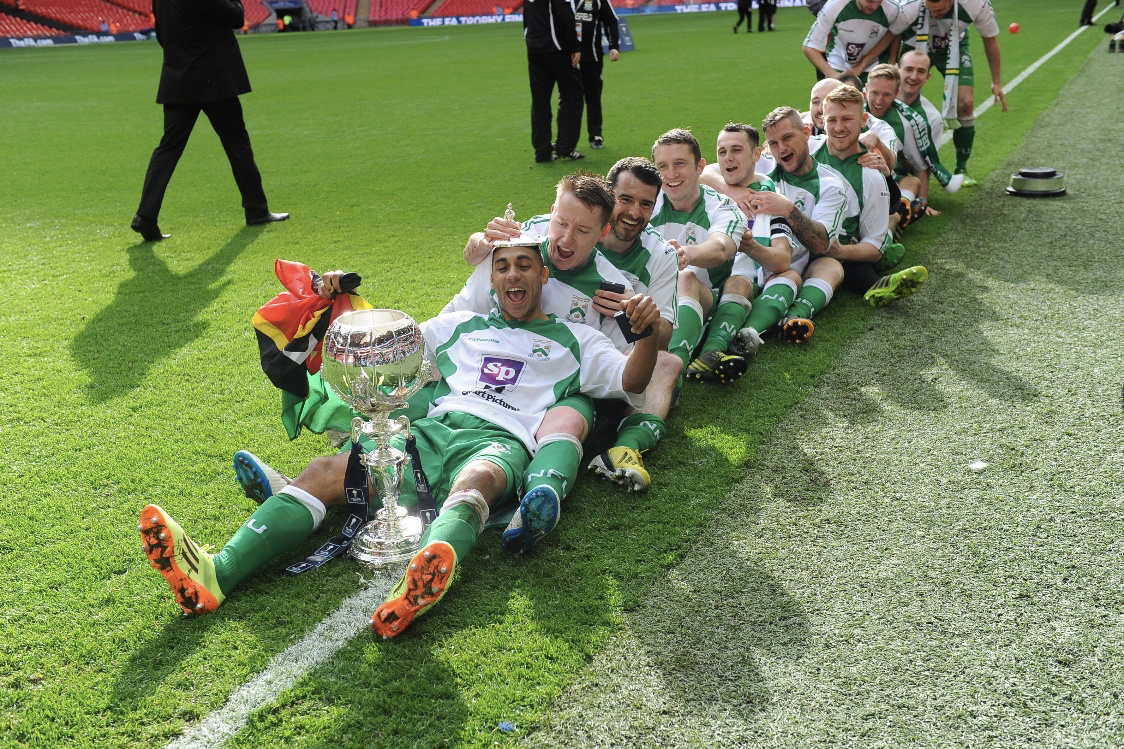
Riding on the crest of a wave from the Trophy victory, The Villages yet again defied all the odds and ultimately completed an unlikely journey that had started at the lowest level of non-league football in 1919. At the end of the 2015-16 season, North Ferriby reached the playoffs and faced a tough semi-final encounter against Boston United. The tie became even tougher after losing the first leg 0-2 away. But in true Ferriby style, the home leg was won 3-0 to set up a Play-off final against big spending AFC Fylde. Another incredible encounter concluded with a 2-1 victory and that 100-year journey climaxed with North Ferriby now taking their place in the National League, step 1 of non-league football. This tiny East Yorkshire club had risen from the lowest to the highest level, an incredibly proud achievement. Just four days after those epic playoffs, however, the last game of the season would be in the East Riding Senior Cup final. On this occasion, club and players had simply run out of steam, physically and mentally drained, and so had to settle for runners-up medals this time out.
Turmoil within the club grew like a cancer during 2016-17 and would ultimately lead to North Ferriby’s first ever relegation, followed in 2017-18 with a second relegation. With a third consecutive relegation almost confirmed, in March 2019 the unthinkable happened. After a three-year decline in fortunes, two relegations and irresponsible financial management, North Ferriby United was ignominiously wound up in Hull’s court. Gone forever after just a 6-minute hearing…….. Or so it was thought!
On 1 April 2019, yes April fool’s day, North Ferriby Football Club rose from the ashes like a phoenix. Within six short months, 18 teams had been re-formed. Men, women and nearly 200 children all brought together to ensure the great Ferriby tradition once again would continue. The FA placed North Ferriby in the NCEL Division 1, step 6 of the non-league pyramid, and so the story of this incredible club can go on. Indeed, by January 2020 Ferriby stalwarts are again filled with pride as news had broken their Dransfield Stadium has been nominated to host an England U18 International against Scotland on Thursday 9 April. Who would have thought that might be possible for a tiny village back in the day? Sadly, the game didn’t take place, as indeed the inaugural season and the whole of football was brought to an abrupt end due to the outbreak of a Covid pandemic, but not before a whole raft of projects in the stadium was completed!
Between April and August 2019, a lengthy list of emergency repairs had to be completed within the stadium. Both the bar cellar and catering facility had been condemned and so before gates could re-open a complete refit was undertaken. New roofing was installed on the changing rooms, chuck wagon and club shop. Internally, clubhouse toilets were repaired and modified. Externally, over 8 tons of general waste had to be removed. A monumental effort by club volunteers, the local community and sponsorship from the local business fraternity.
Despite all the hard work off the pitch, the football situation didn’t get much better during the 2020-21 season as the ongoing pandemic again intervened, leaving the FA with no choice but to declare the season null and void for a second year. Not to be deterred, however, in true Ferriby tradition, a major £100k changing rooms facility improvement project was completed.
2021-22 started with optimism this could be the first full season of the new club. It was also to be the year both 4G and stadium floodlighting would be replaced with state-of-the-art energy saving LED’s. On the pitch, the squad certainly didn’t disappoint by winning the promotion play-off final in front of a bumper crowd of 1442 in The Dransfield Stadium. Furthermore, the newly created Development Team (U23’s) also won promotion from the County League Div 2.
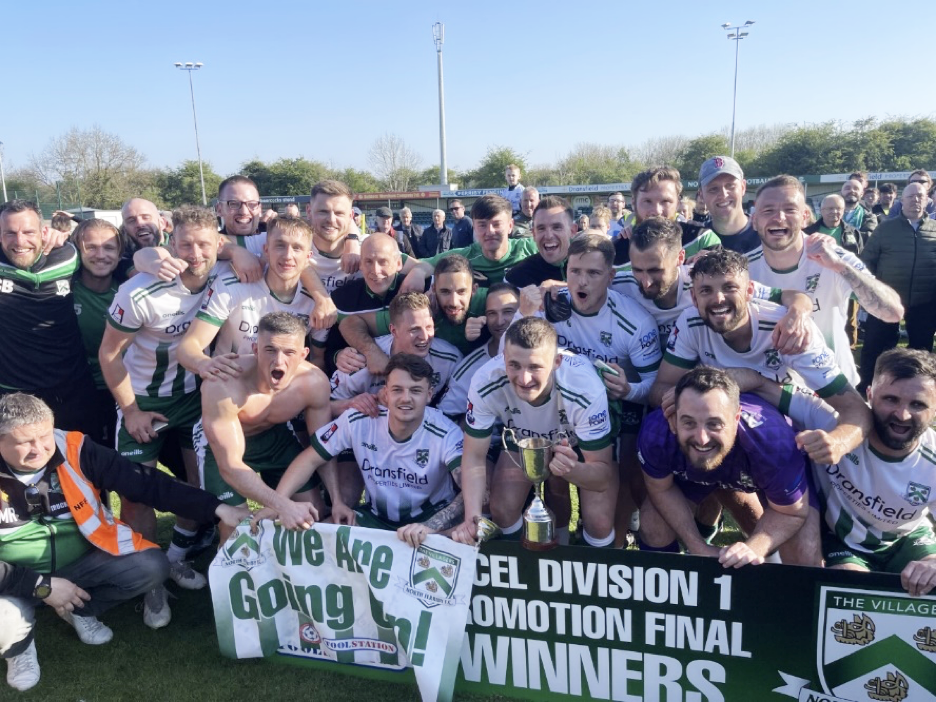
The 2022-23 season got off to a disastrous start with five goalkeepers having to be used for various reasons within the first four weeks. Furthermore, quick fire exits from the FA Cup and FA Vase ensured we could now literally ‘concentrate on the League’. And how well did that turn out! The club went on to win the League by a whopping 14 points and secure back-to-back promotions for the first time in club history. Unsurprisingly, the club had achieved the highest number of wins within the league but had also scored the most goals and conceded the fewest. They also had more clean sheets than any other side. Attendances had steadily increased during the period since reforming and this season saw an incredible average attendance of 532 at The Dransfield.
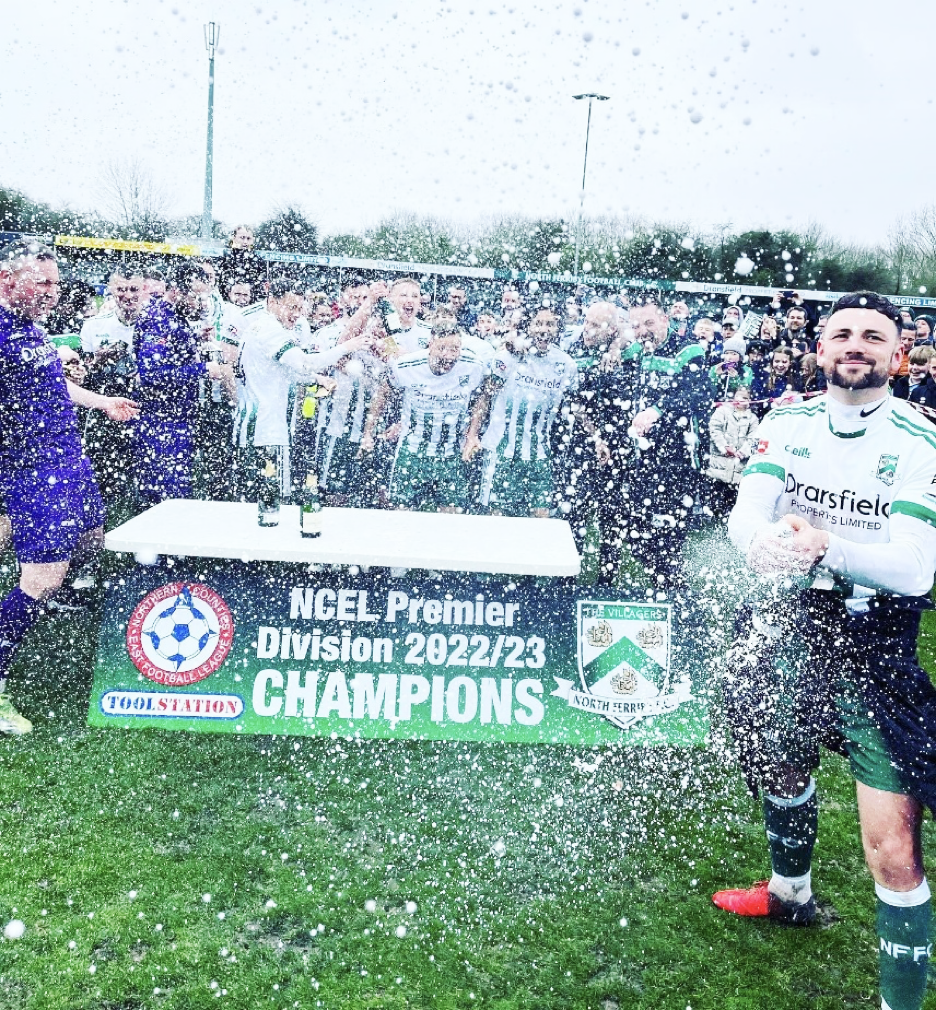

North Ferriby Roll of Honour
North Ferriby AFC
1919-20 Innugural Season South Howdenshire League
1920-21 South Howdenshire Cup Finalists
1927-28 South Howdenshire Cup Winners
North Ferriby United
1934-35 Innugural Season East Riding Church League
ER Church League Division 1 Runners-up
ER Church League - League Cup Winners
1936-37 ER Church League - League Cup Winners
South Howdenshire Cup Winners
1937-38 ER Church League Division 1 Champions
South Howdenshire Cup Winners
1946-47 East Riding Amateur League Senior Cup Runners-up
South Howdenshire Cup Winners
1947-48 South Howdenshire Cup Winners
Club record score 22-0 v Brighams
1949-50 South Howdenshire Cup Winners
East Riding Amateur League Senior Cup Runners-up
First ER club to ever progress to 1st round proper of FA Amateur Cup
ER County League Division 1 Runners-up (2nd X1)
1950-51 South Howdenshire Cup Winners
1951-52 South Howdenshire Cup Winners
1959-60 East Riding Amateur League Senior Cup Winners
South Howdenshire Junior Cup Runners-up (2nd X1)
1960-61 South Howdenshire Junior Cup Winners (2nd X1)
1961-62 East Riding Amateur League Division 3 Champions
1962-63 South Howdenshire Cup Winners
1963-64 East Riding Amateur League Division 2 Champions
1969-70 ER Senior Cup Runners-up
South Howdenshire Junior Cup Winners (2nd X1)
1970-71 ER Senior Cup Winners
Yorkshire League Division 2 Champions
1971-72 ER County Cup Winners (2nd X1)
1974-75 Yorkshire League - League Cup Winners
1975-76 Yorkshire League Division 1 Runners-up
1976-77 ER Senior Cup Winners
1977-78 ER Senior Cup Winners
1978-79 ER Senior Cup Winners
1982-83 Yorkshire Leugue merge with Midland League to create NCEL
1982-83 NCEL Division 1 Runners-up
ER Senior Cup Runners-up
1984-85 ER Senior Cup Runners-up
1985-86 NCEL Division 1 Champions
1988-89 FA Vase Semi-Finalists
1990-91 ER Senior Cup Winners
NCEL Presidents Cup Winners
NCEL League Cup Runners-up
NCEL Reserve Division Runners-up
1992-93 ER Senior Cup Finalists
1994-95 NCEL League Cup Runners-up
1996-97 FA Vase Finalists (Wembley Stadium)
ER Senior Cup Winners
ER Dr.Lilly Cup Winners (U18)
1997-98 NCEL Premier Division Runners-up
NCEL League Cup Runners-up
ER Dr.Lilly Cup Winners (U18)
ER Senior Cup Winners
1998-99 NCEL Presidents Cup Winners
ER Senior Cup Winners
ER Dr.Lilly Cup Winners (U18)
NCEL Reserve Division Champions (2nd X1)
1999-00 NCEL Premier Division Champions
NCEL Presidents Cup Winners
ER Senior Cup Winners
2000-01 ER Senior Cup Winners
2001-02 ER Senior Cup Winners
2002-03 ER Senior Cup Winners (Cup record - 7 consecutive wins)
Unibond League Division 1 Play-offs
2004-05 Unibond League Division 1 Champions
2005-06 Unibond League Premier Division Play-offs
2006-07 ER Senior Cup Winners
2007-08 ER Senior Cup Winners
2008-09 ER Senior Cup Winners
2009-10 ER Senior Cup Winners
Unibond League Premier Division Play-offs
2010-11 Unibond League Premier Division Play-offs
2011-12 Doodson League Cup Winners
2012-13 Unibond League Premier Division Champions
Doodson League Cup Winners
ER Senior Cup Winners
2013-14 Conference North League Play-offs
ER Senior Cup Winners (18th time)
2014-15 FA Trophy Winners (Wembley Stadium)
2015-16 Conference North League Promotion Final Winners
ER Senior Cup Runners-up
North Ferriby FC
2019-20 Inaugural Season Northern Counties East League Division 1
2020-21 ER Senior Cup Finalists (not played - Covid)
2021-22 NCEL Div 1 Promotion Play-off winners
2022-23 NCEL Premier Division Champions
2023-24 ER Senior Cup Runners-up
